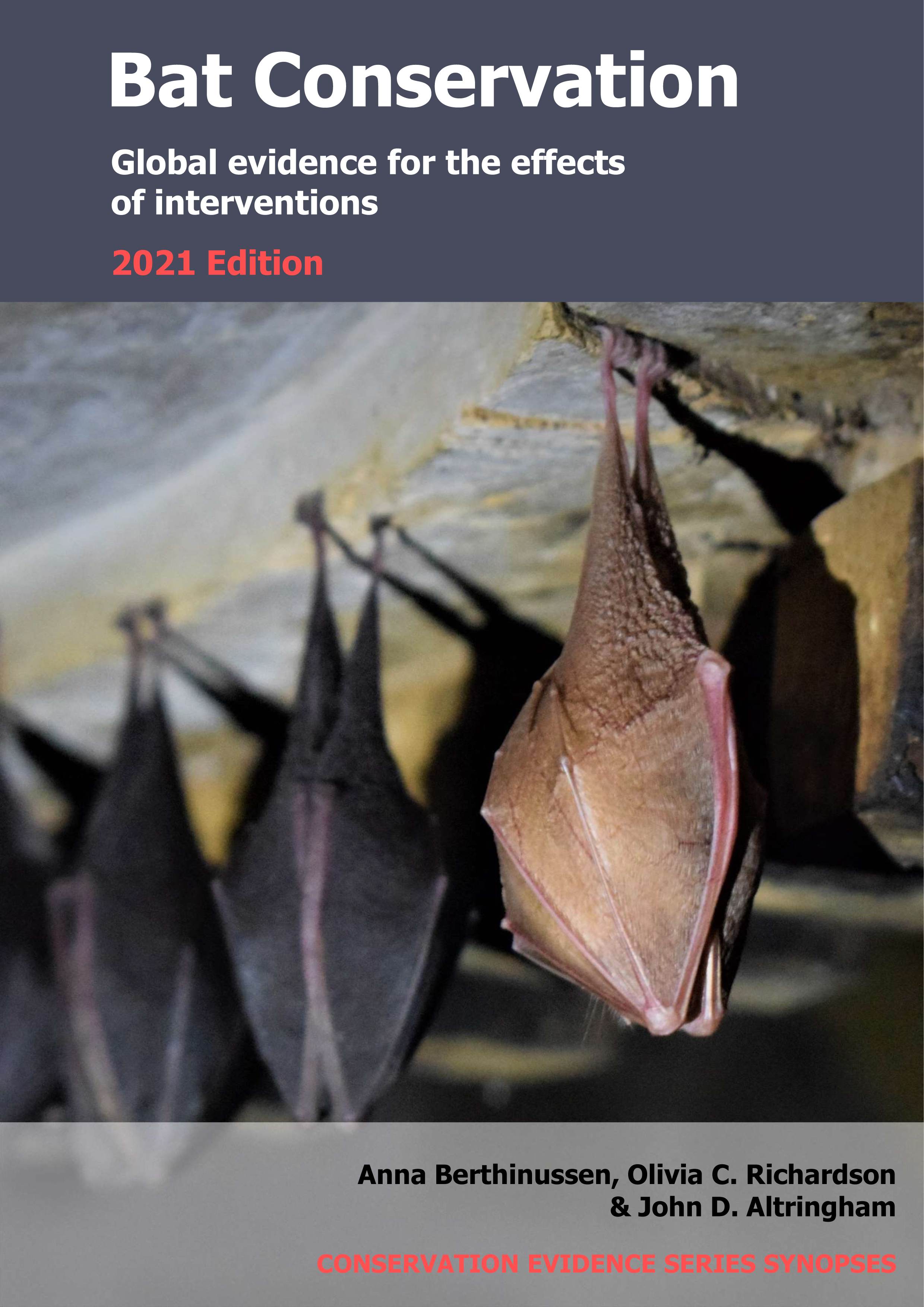Restore or create wetlands
-
Overall effectiveness category Likely to be beneficial
-
Number of studies: 1
View assessment score
Hide assessment score
How is the evidence assessed?
-
Effectiveness
62% -
Certainty
40% -
Harms
0%
Study locations
Supporting evidence from individual studies
A replicated, controlled, before-and-after study in 2000–2001 of six restored and six undisturbed wetlands in South Carolina, USA (Menzel et al 2005) found that restoring wetlands increased overall bat activity, and restored wetlands had similar bat activity to undisturbed wetlands. Overall bat activity was higher over wetlands after restoration (average 7 bat passes/30 minutes) than before (2 bat passes/30 minutes). Before restoration, overall bat activity was lower at drained wetlands (average 2 bat passes/30 minutes) than undisturbed wetlands (17 bat passes/30 minutes). However, after restoration there was no significant difference (restored: 15 bat passes/30 minutes; undisturbed: 9 bat passes/30 minutes). Seven bat species were recorded in total (see original paper for data for individual species). Wetlands were Carolina bays (0.5–1.5 ha) that were either undisturbed (three sites) or had been drained >50 years previously and restored in 2000 (drainage and forest removed; three sites). At each of 12 sites, bat activity was recorded during a random 30-minute time interval between dusk and midnight with 1–2 bat detectors before restoration (in 2000) and after (in 2001).
Study and other actions tested
Where has this evidence come from?
List of journals searched by synopsis
All the journals searched for all synopses
This Action forms part of the Action Synopsis:
Bat Conservation
Bat Conservation - Published 2021
Update 2020





)_2023.JPG)














